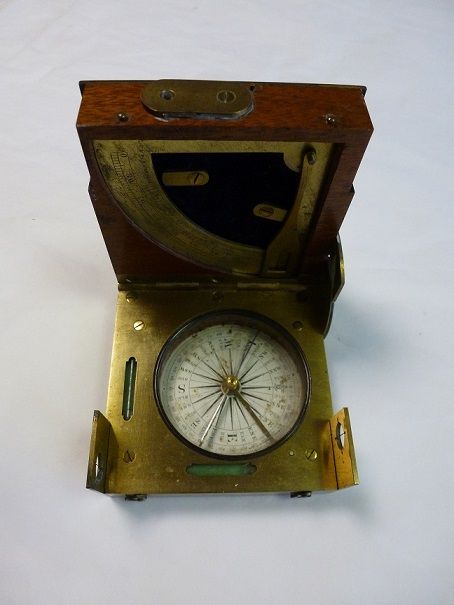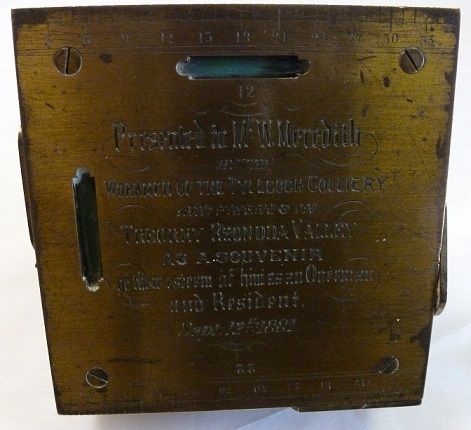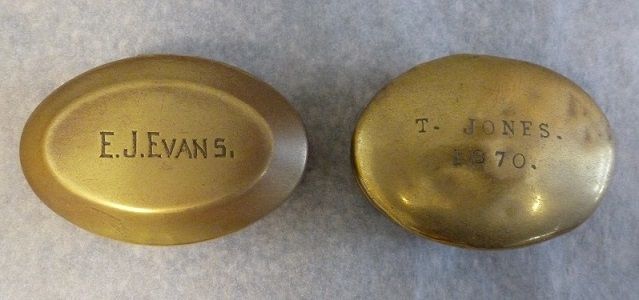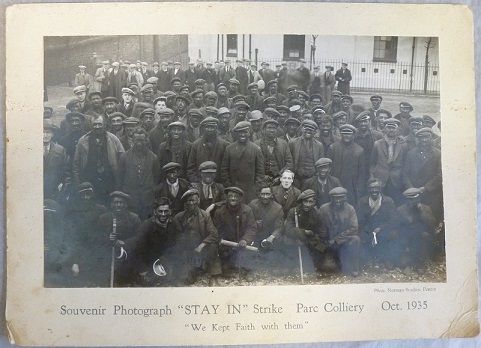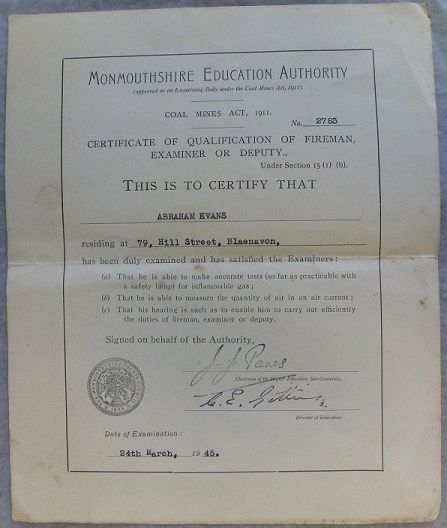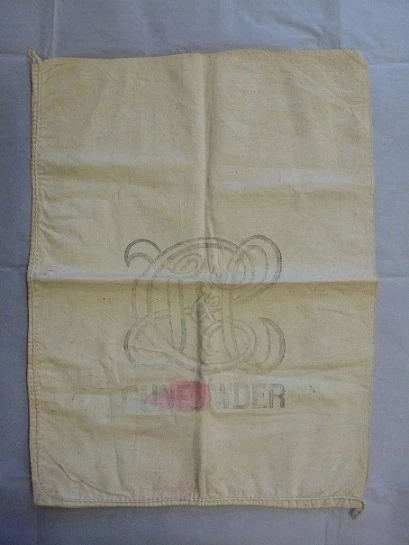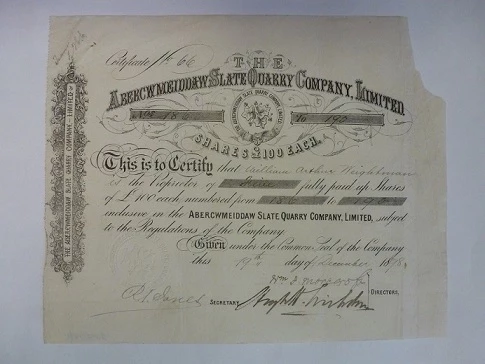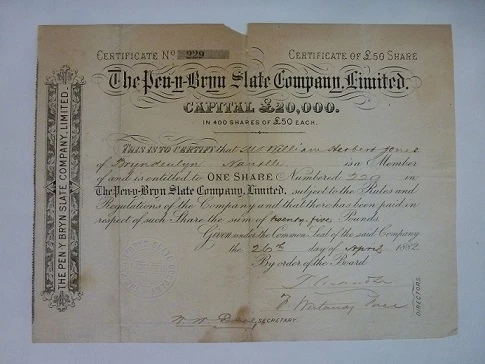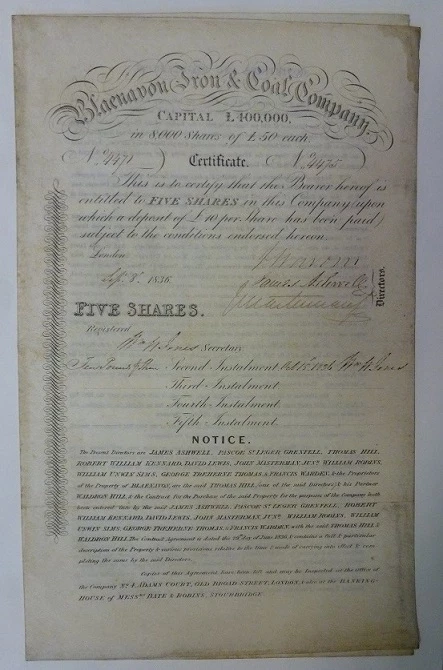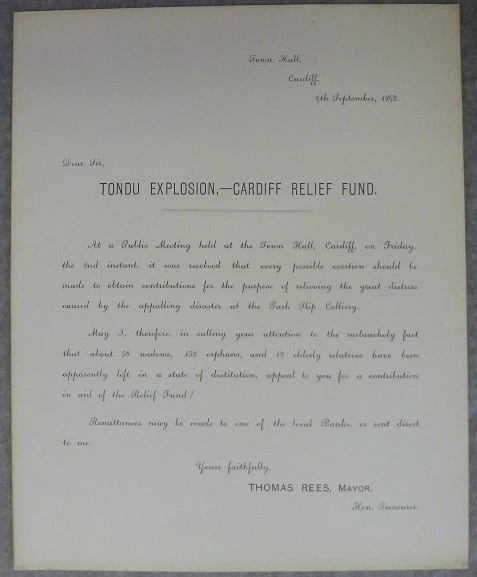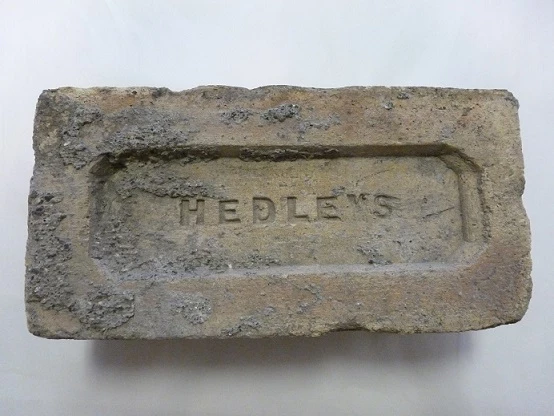During October we were fortunate to be donated this interesting gunpowder bag used at Curtis's and Harvey Ltd.’s gunpowder factory in Glynneath. Their monogram can be seen on the front of the cotton bag. It was used by the donor's great grandmother Elizabeth Thomas. She left school aged about 14 to work on a farm, but later began work at this gunpowder factory during the First World War. This timely donation allowed us to put this object on display at the National Waterfront Museum, Swansea in the exhibition “Working for Victory: Welsh Industry and the First World War” which runs until 15th March 2015.
This month we purchased three share certificates to add to our important collection of Welsh share certificates.
The first is for five £100 shares for The Abercwmeiddaw Slate Quarry Company Limited and is dated 1898. It was a Liverpool based company registered in 1876 to acquire the slate quarry of the same name at Corris which had been opened in the 1840s. The company operated as a middle size quarry (in 1882 it employed 188 men producing 4,000 tons of slate) until it was wound up in 1905 as the Welsh trade declined. A new company of similar name was formed in 1911 and reopened the quarry on a smaller scale, until ceasing to exist in 1938.
The second certificate is for one £50 share in the Pen-y-Bryn Slate Company Limited, and is dated 1882. Registered in 1881 to acquire slate quarries at Nantlle that originated in the eighteenth century and which had been worked on some scale since the 1830s. The company was a typical mid-sized concern, operating four quarry pits serviced by Blondins in typical Nantlle style. In 1883 it employed 240 men and produced 5,000 tons of slate. The company failed in 1887 and the quarry closed until 1895 when it was reopened on a smaller scale until the 1940s.
The final certificate is printed on vellum and is a £50 share in the Blaenavon Iron & Coal Company, and is dated 8 September 1836. This company was an early joint stock company (with an enormous capital of £40,000) established to acquire the iron works and collieries from the Hill family and their partners. The new company considerably expanded the works and began a new works at Forgeside, built many houses, and introduced steam locomotives, making the works one of the leading UK iron producers. It became a limited liability concern in 1864.
On 26th August 1892 at explosion at Parc Slip Colliery killed 112 men and boys. This new accession is one of two booklets of letters for the Tondu Explosion Relief (Cardiff) Fund which would have been sent out to raise money for the relief fund. They are dated Town Hall, Cardiff 3rd September 1892.
We have a small collection of objects and photographs relating to this disaster including a commemorative mug which can be seen here
This brick was manufactured at one of the Hedley Brothers collieries, probably in the Bryncoch area. It was recovered from the building known as St. Peters Schoolroom on Brecon Road, Pontardawe. Amgueddfa Cymru holds the Welsh national collection of bricks, and this is an important addition.
The final object this month is a colliery official’s yardstick (also known as Deputy's stick). It was used by the last N.C.B. Manager at Big Pit before it closed as a working mine in 1979. A yardstick was carried by officials as an aid in the process of testing for gas. Before about 1960 there was a hole at the top of the stick into which the deputy could fit the hook of his lamp in order to raise it into the roof to test gas. More recently a special sampling valve could be fitted onto the ferrule at the other end of the stick in order that gas samples could be taken using a sampling bulb which is then injected into a Garforth type safety lamp.
Mark Etheridge
Curator: Industry & Transport
Follow us on Twitter - @IndustryACNMW
